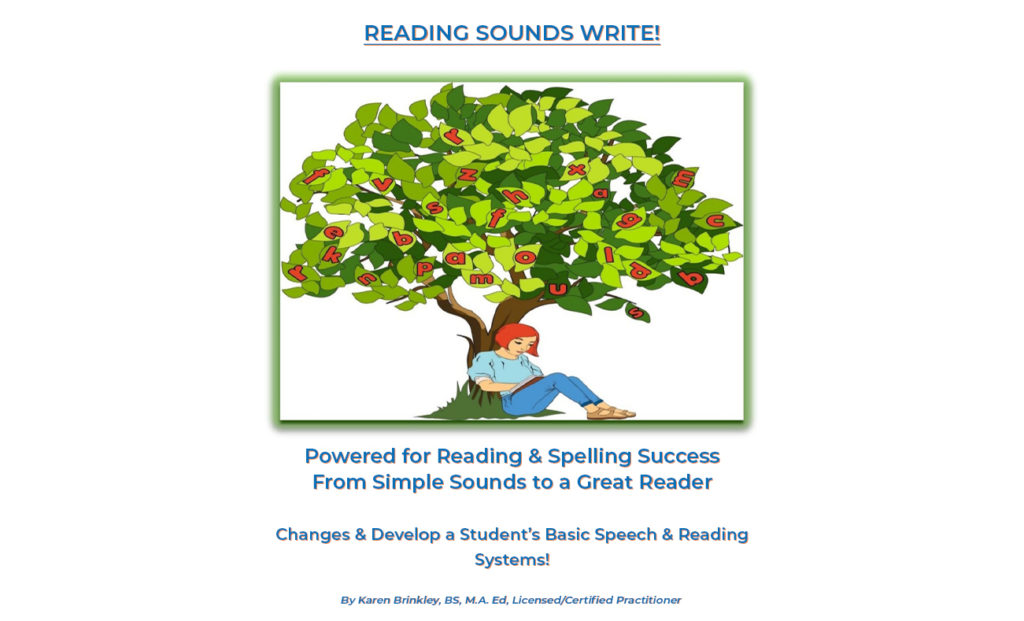Call Us : 813 -723-0113


There’s been a lot of discussion in the literacy field about the significance of orthographic mapping. While the term is commonly mentioned, what does it really mean? Let’s explore the stages of reading development, understanding what orthographic mapping is (and what it is not), and examine ways to help students build strong orthographic maps.
Reading is a multifaceted process involving multiple stages of development. Before children start reading, they acquire language, learn how books function, and begin recognizing that symbols have meaning (e.g. “the golden arches” symbolize McDonald’s).
Next, children start learning the alphabet and the corresponding letter sounds. For instance, they discover that the letter ‘d’ represents the /d/ sound. Through repeated practice—seeing, hearing, saying, and eventually writing these letter- sound correspondences-connections between letters and sounds strengthen.
As children progress from learning the alphabet to decoding, they initially sound out each letter in a word and blend the together. Though slow at first, practice helps children recognize and blends sounds more efficiently. During this stage, orthographic mapping begins. Familiar words, letters, and sounds are bundled together and stored in long-term memory for quick retrieval.
With fluency established, children transition from “learning to read” to “reading to learn.” They decode new words, engage in diverse viewpoints, and tackle complex ideas. This advanced reading state relies heavily on orthographic mapping.
David Kilpatrick, a researcher in reading development and is a professor in the department of Psychology, State University of New York College, describes orthographic mapping as the mental process used to store words for immediate, effortless retrieval. This process transforms unfamiliar printed words into instantly recognizable ones.
For children taught with systematic phonics, orthographic mapping occurs with every word they learn to read automatically. Though invisible, its success is evident when a child reads a word effortlessly. The brain connects a word’ letters and sounds, bundles them together, and stores them for automatic recall.
Orthographic mapping is an ongoing process. Even as fluent readers, we
continue mapping new words throughout life. For example, you may have found
orthographic unfamiliar at first, but after repeated exposure, it becomes part of
your mental lexicon.
1. Not Memorizing Sight Words: A common misconception is equating orthographic mapping as memorizing sight-words. While mapped word is read instantly, traditional sight-word methods involve rote memorization without connecting graphemes and phonemes. These words are truly not mapped in the brain.
1. Not a Teaching Method: Orthographic mapping isn’t a teaching strategy or activity. It’s a mental process that happens in a child’s mind. Teachers can foster conditions for mapping by teaching some foundational skills, but the process itself is internal.
To support orthographic mapping, focus on these key areas.
By combining these strategies, we give children the tools to create orthographic maps and become proficient readers and spellers.
Teaching children (all students of any age) to read and spell doesn’t need to be
overwhelming. Programs like those at Optimal Learning Skills (813.723.0113)
focus on phonological and phonemic awareness through multisensory activities
that promote orthographic mapping. With the right tools and approaches, we can
help every child become a comfortable, fluent reader.
By:
Building Basic Blocks is Reading.
Teach the Sounds Code!
Sound Pronunciation(Above and Beyond Phonics).
Letters—Words—Sound Reading!

READING offers a lifetime of rewards, both inside and outside the classroom. SPEECH SOUNDS are the foundation which the Writing System and the Reading Code was formed. Sounds are Natural. Reading SPEECH & SOUNDS Write Spelling require the Sounds that we say and the letter symbols we use in Writing.
For many Students, Reading Skills can be Hard to Learn.
This program helps Readers Build a Foundation of Core Reading and Improve Reading Comprehension.
For many Students, Reading Skills can be Hard to Learn.
This Reading Program gives Students a way to Build these Skills and become stronger, more confident Readers.
It includes the Sound-to-Code approach to help learners build and improve Reading Skills. This program helps Readers Build a Foundation of Core Reading and Improve Reading Comprehension.
It uses Exercises for a range of Cognitive skills tied to Reading with a Special Focus on Auditory Processing Skills.
Auditory Processing is the Cognitive Skill that allows Readers to:
These Reading and Spelling Programs Develops:
Improve Reading Comprehension
Recognizing words is only half of the battle when reading. Grasping the meaning behind whose words is equally important. So, when students are having trouble understanding what they read, help with reading comprehension can be a game changer.
Focusing on the following set of skills if a key:
One of the main focuses of comprehension is a skill called visual processing.




Permanently eliminate difficulties associated with learning disabilities.
Trending Searches:
Auditory Skills Training, Tutoring, Learning Disabilities Tutoring, Private Special Education, Advanced Brain Skills, Brain Gymnastics Tutoring, Cognitive Learning Skills, Dyslexia Tutoring, Learning Skills, Reading and Comprehension Tutoring
The comprehensive solution to permanently eliminate difficulties associated with learning disabilities.